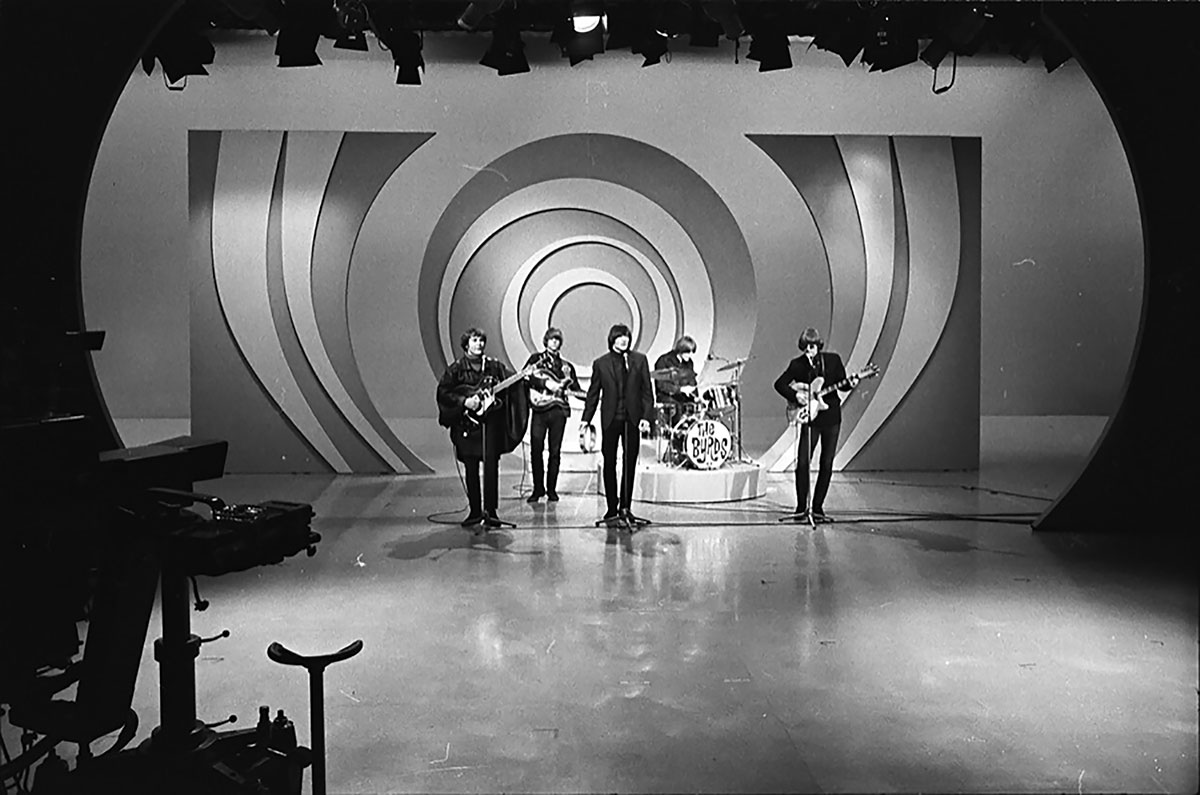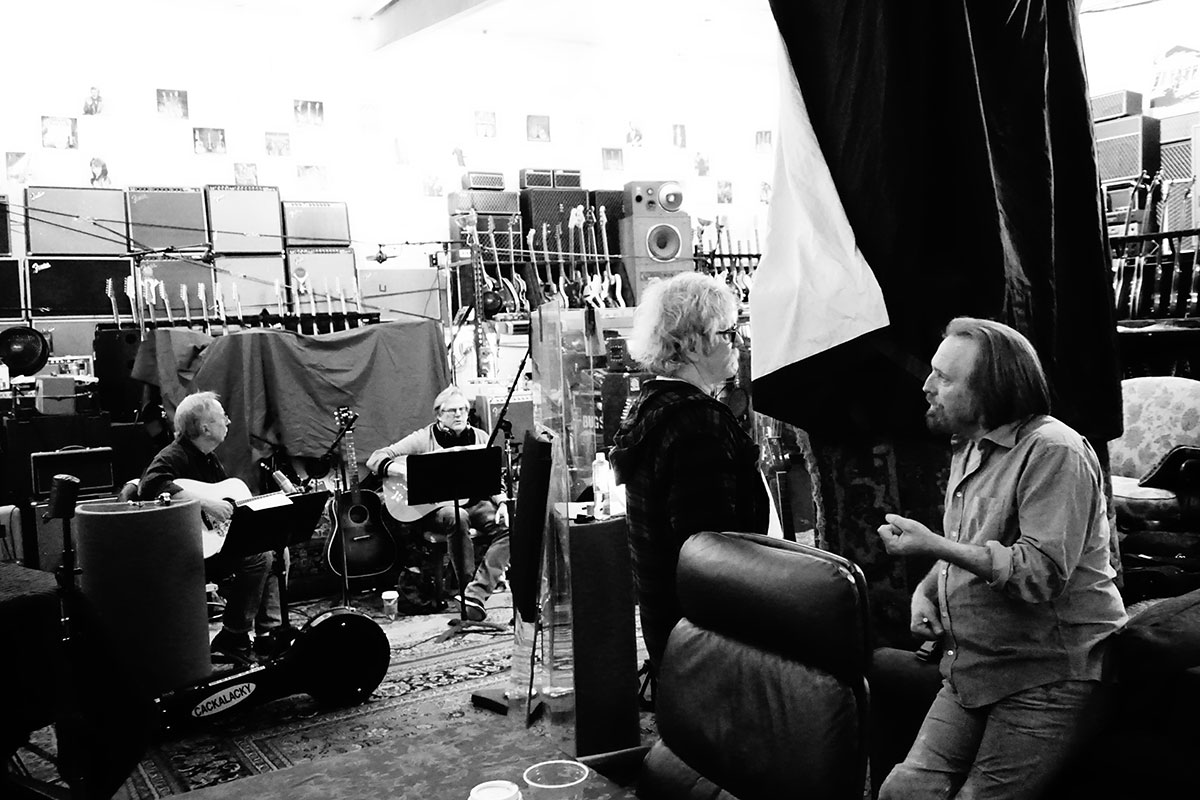
After a concert more than a decade ago, I asked Chris Hillman whether I could write his life story. I had no profit motive in mind. I simply felt his huge contribution to American music was largely unrecognized, and his diverse musical resume was second to none.
Hillman told me he wasn’t interested in a book about his life, and he was content playing acoustic music with his long-time friend Herb Pedersen. He had a change of heart since, writing his autobiography Time Between: My Life as a Byrd, Burrito Brother, and Beyond.
“At that time, I really wasn’t interested in writing about my life,” Hillman tells me this month. “When I did begin writing, it felt like it was the right time for me. Initially, it was written as a memoir for my son, daughter and grandchildren, so they would know about papa’s career in music.”
It’s a career that I often tell people is unparalleled. Yes, there are guitarists and mandolinists with greater skills, songwriters with deeper catalogs and singers with more impressive voices. And, yes, Roger McGuinn was the talented unquestioned leader of the Byrds from beginning to end, and three other Byrds — Gene Clark, David Crosby and, for one album, Gram Parsons — also deserve kudos for their contributions in creating and shaping folk-rock, country rock and psychedelic rock. But Chris Hillman deserves those kudos, too. He was an original Byrd and the mainstay of so many important bands — an innovator, sometimes probably even unaware of the innovation, as he honored the music of his roots and played the music that he loved.
And it’s that resume I keep coming back to and challenge other music fans to name a better one. As a teenager, Hillman played mandolin in two California bluegrass bands, the Scottsville Squirrel Barkers and the Golden State Boys, which included such notable musicians as Vern and Rex Gosdin and Bernie Leadon, a future founding member of the Eagles. At age 20, Hillman strapped on an electric bass guitar to become a founding member of the Byrds, a group that immediately became America’s version of the Beatles and hit the top of the music charts by recording a rock and roll version of Bob Dylan’s classic folk song “Mr. Tambourine Man.” Hillman next became a founding member of the Flying Burrito Brothers, who also have been credited with inventing country rock, and a founding member of Stephen Stills’ Manassas, which released a debut double album that is one of the finest in rock music history. In 1974, Hillman teamed with former Poco lead singer Richie Furay and J.D. Souther for the Souther-Hillman-Furay Band, which was billed as a country-rock supergroup and had a hit single, “Fallin’ in Love.” A solo career followed with band
members that included Rick Roberts, Jock Bartley and Mark Andes (who later founded Firefall), and, in the late ‘70s, Hillman joined former Byrds McGuinn and Clark for two albums as McGuinn, Clark & Hillman.

L-R David Crosby, Chris , Gene Clark, Michael Clarke, Roger McGuinn
Photo: The Henry Diltz Archives
In the ‘80s, Hillman was equally prolific. He released a duo album with McGuinn; cut a gospel-bluegrass album with Leadon, Al Perkins, David Mansfield and Jerry Scheff; toured for a short time in Dan Fogelberg’s band after playing on Fogelberg’s High Country Snows album, and formed the Desert Rose Band. with, among others, Pedersen and guitar wizard John Jorgenson. The band’s songs hit No. 1 on the country music charts and received Grammy nominations. The Byrds were inducted into the Rock and Roll Hall of Fame in 1991, and, after the Desert Rose band disbanded, Hillman released solo albums, duo albums with Pedersen and three albums with bluegrass giants Larry and Tony Rice in their group Rice, Rice, Hillman and Pedersen. In September 2017, Hillman released Bidin’ My Time, produced by a big Byrds fan, Tom Petty, who died a month after the album was released. A year later, Hillman, McGuinn and Marty Stuart and His Fabulous Superlatives joined forces to celebrate the 50th anniversary of the Byrds’ ground-breaking country-rock album Sweetheart of the Rodeo and played the entire album during a cross-country tour. Colorful details about each of those musical pursuits and Hillman’s personal struggles and triumphs come to life in Time Between: My Life as a Byrd, Burrito Brother, and Beyond. The book is an easy read that flows smoothly, and each chapter eloquently ends in a way that makes a reader hungry for the next one. No ghostwriter was involved.
“I wrote the book myself,” Hillman says. “My wife Connie assisted me with research, and my publisher at BMG Books was the editor. It is my sole creation. I wrote it over a seven-year period, when I was not touring or recording. The manuscript sat on the shelf until I decided it was time to see if there was interest from a publisher. I was approached by BMG Books after I mentioned the manuscript during an interview.”
Most of the book chronicles Hillman’s life and career before the Desert Rose Band threw in the towel in 1994. I mention to Hillman that I really enjoyed the book but longed for more chapters about his duo work with Pedersen during the past few decades after their years together in the Desert Rose Band. Except for Hillman’s brief time with Manassas, I personally have enjoyed his music with Herb more than any other post-Byrds aspect of his career.

Photo: Josh Jove
“I wrote what I felt was most important, not only to myself but to the reader, as well,” Hillman says.
The Byrds were undoubtedly the pinnacle of Hillman’s career. In his book, he writes: “We were encouraged early on to choose material that would stand the test of time, and I think we
listened. We left a lasting legacy by introducing, jazz, psychedelic and country elements to rock music. In our short time together, we made a major artistic statement and paved a path for many musicians to follow in the years to come.”
Hillman hints in the book that he may have made a mistake quitting the Byrds after their set at the Rose Bowl in Pasadena, California, in 1968. “The band was finally right where it should be” with the addition of extraordinary guitarist Clarence White and Gene Parsons, he writes, but he made an “insanity-fueled exit” from the band after a contract dispute with the group’s manager.
I ask Hillman which live performance of the Byrds was the best during the time he was in the band.
“Los Angeles, California, in January 1966 at The Trip on Sunset Strip,” he responds. “The Paul Butterfield Blues Band opened for us for a week of shows. They were so good that we performed at our very best — not in a competitive way but being on our game.”
What about the legendary days with the Flying Burrito Brothers? “The best performances were definitely those at Dartmouth College in New Hampshire and Antioch College in Ohio that were recorded in 1972 for Last of the Red Hot Burritos, the final album we recorded for A&M Records,” Hillman recalls. “We were at our very best.”
Hillman can’t pinpoint the best Manassas concert, because “most of the Manassas shows were exceptional,” he says. “A great band!”
While Manassas’s live shows were a blend of charging rock and roll, Latin jams, blues, bluegrass, country and folk, the acoustic duo shows of Hillman and Pedersen during the past few decades have also been great. Among other highlights, it’s been a treat hearing their two-part harmonies, Hillman’s mandolin picking in the Byrds’ brilliant song “Eight Miles High,” their covers of songs by Buck Owens, the Louvin Brothers and Gene Clark, and the many stories of their musical past. Each show is not just a musical treasure but also an
important education in what has made many forms of American music special from the 1950s through today.

Photo: Jeremy Gordon
It’s also a joy to see the interaction and respect between the two long-time friends who share a deep love for their own music, the music of many great musicians they once played with and the music of artists who influenced them. There’s a special harmony between them on stage, though they are very different people individually and even politically.
Pedersen explained to me in the past: “Chris and my humor are pretty much on the same page. Politically? Not so much. We’ve known each other so long —- we are really just like brothers. I’d take a bullet for him.”
I ask Hillman what audiences can expect to hear when he and Pedersen tour again in 2022. Will they solely delve into their impressive, extensive live catalog or also perform some songs they hadn’t previously played together?
“The shows that we recently performed in California, Louisiana and Texas in September and November somewhat mirrored the book,” Hillman responds. “There were at least one or two songs from every group I’ve been in. We included a few I’d never played onstage: ‘Bound to Lose’ from Manassas, ‘Rise and Fall’ from Souther-Hillman-Furay and ‘Long Long Time’ from McGuinn, Clark & Hillman. I also read a bit from my book within the show.”
Autographed copies of Time Between: My Life as a Byrd, Burrito Brother, and Beyond are available at Hillman’s website. He also narrated an audiobook version for Penguin Random House.
I ask Hillman whether it was difficult to choose a title for his memoirs and why he chose Time Between.
“It was not difficult at all,” he says. “‘Time Between’ is the title of the first song I wrote with lyrics and melody, and it also relates to the earliest days of my life until now.”
